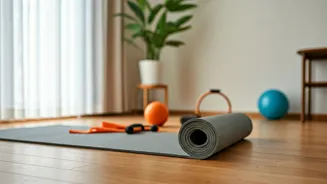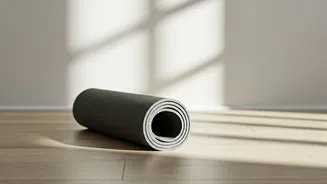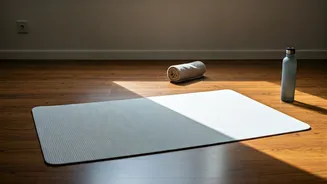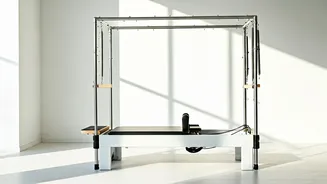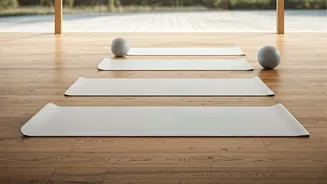Pilates Introduction
Pilates, a system of exercises focusing on core strength, flexibility, and overall body awareness, is a great method for beginners because it's adaptable.
It requires no specialized equipment, making it incredibly accessible for people who want to work out at home. This is especially beneficial for people just starting their fitness journey. Regular practice can improve posture, muscle tone, and balance. The fundamental principles of Pilates include concentration, control, centering, precision, breath, and flow. These principles guide each movement, helping practitioners to connect their mind and body and to move with intention and purpose. By focusing on these principles, Pilates can transform a routine exercise into a mind-body experience, leading to long-term physical and mental health benefits.
Hundred Exercise
The Hundred is an excellent warm-up and core-strengthening exercise. To perform it, lie on your back with your knees bent and feet flat on the floor. Engage your core to lift your head, neck, and shoulders off the floor, then extend your arms straight, palms down. Begin pumping your arms up and down, inhaling for five counts and exhaling for five counts, repeating this cycle ten times. Beginners can modify the exercise by keeping their head down or their legs bent. As you become more proficient, you can extend your legs to a 45-degree angle or keep them straight up towards the ceiling, increasing the challenge. This exercise strengthens the abdominal muscles, improves breathing, and warms up the body, making it a staple in any Pilates beginner routine. Remember to keep your movements controlled and focus on your breathing to maximize the benefits.
Roll Up Exercise
The Roll Up exercise is designed to improve spinal flexibility and core control. Start by lying on your back with your legs extended and arms overhead. Engage your core to curl your head and shoulders off the mat. Slowly, one vertebra at a time, roll up, reaching towards your toes. As you move, keep your core engaged and your back rounded. Then, slowly roll back down, articulating your spine one vertebra at a time, to the starting position. This exercise stretches the spine, strengthens abdominal muscles, and improves coordination. Beginners might find it challenging to roll up smoothly at first. Modifications include bending the knees or keeping the hands closer to the body. Practicing the Roll Up regularly will enhance your posture and spinal health.
Rolling Like Ball
This exercise enhances spinal articulation and improves balance. Begin by sitting with your knees bent, feet off the floor, holding your shins with your hands, and balancing on your tailbone. Engage your core to roll back while maintaining a rounded spine and then roll back up to the starting position. It's crucial to keep your abdominal muscles engaged to control the movement and avoid putting pressure on your neck. Beginners may start with a smaller range of motion or modify by keeping their feet on the floor. This exercise improves core stability, coordination, and spinal mobility. It's a fun and effective way to connect with your body and enhance your body's awareness. Consistent practice will help in developing better control over the core muscles and improve balance.
Single Leg Circles
Single Leg Circles are aimed at improving core stability and hip flexibility. Lie on your back with one leg extended towards the ceiling and the other bent, foot flat on the floor. Extend your arms out to the sides for balance. Use your core to draw small circles with the extended leg, first in one direction, then the other. Beginners can bend their leg at the knee if they find it challenging to keep it straight. The key is to maintain a stable pelvis throughout the movement and avoid rocking the hips. This exercise strengthens the core, improves leg flexibility, and enhances coordination. This exercise also increases the range of motion in the hip joint. Ensure the movements are controlled and deliberate for optimal results.
Spine Stretch Forward
Spine Stretch Forward improves spinal flexibility and stretches the hamstrings. Sit upright with your legs extended and feet flexed. Extend your arms forward at shoulder height. Inhale and lengthen your spine. Exhale and slowly round your spine, reaching forward towards your toes. Keep your core engaged and maintain a straight back. Beginners may modify this exercise by bending their knees slightly. This exercise increases spinal flexibility, stretches the hamstrings and improves posture. Spine Stretch Forward is a simple yet effective way to improve flexibility and range of motion. Focus on the breath and movement to get the most benefits. As you progress, you can try to reach further forward, enhancing the stretch and flexibility.
